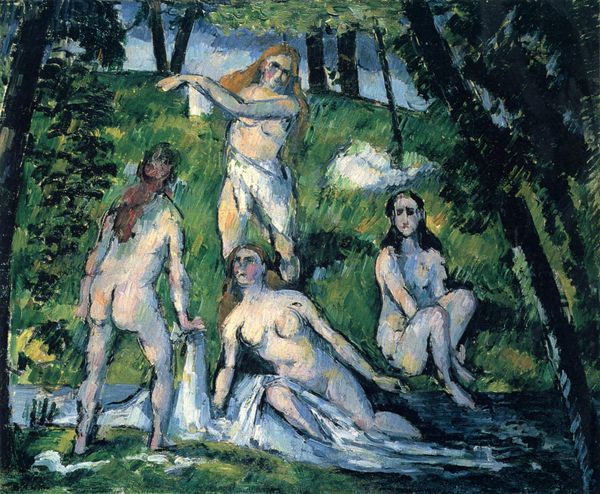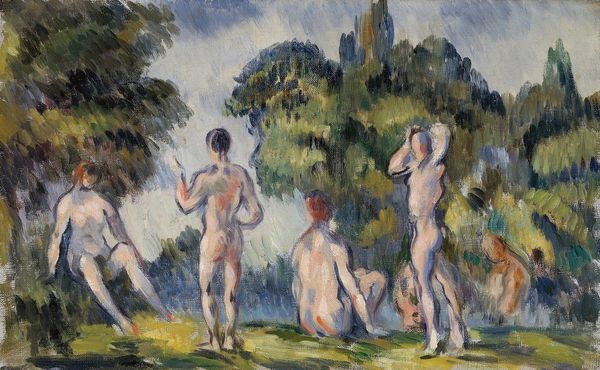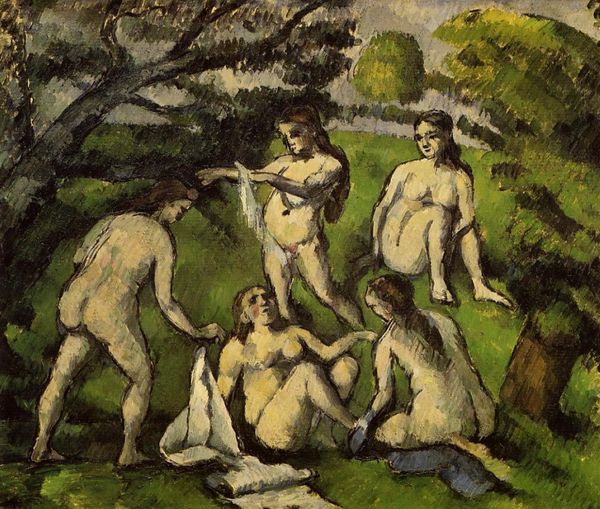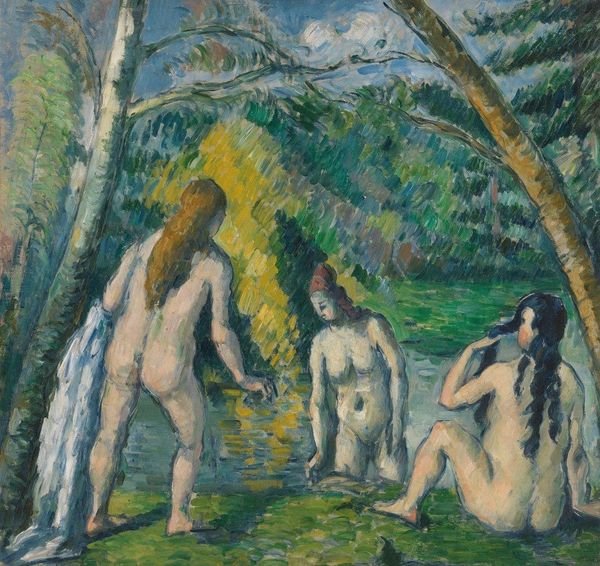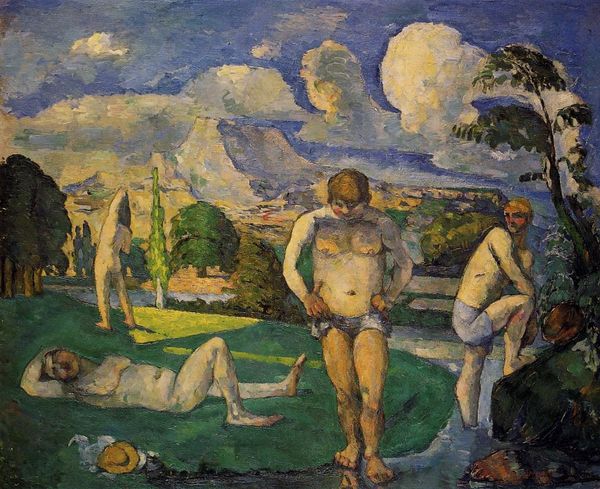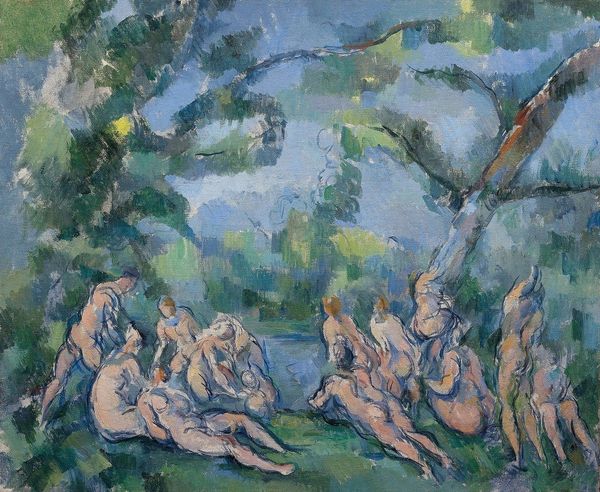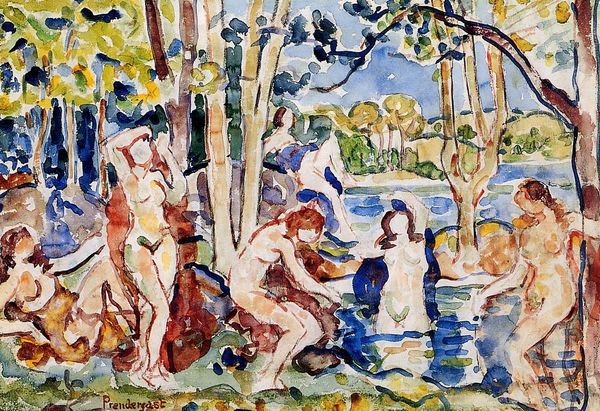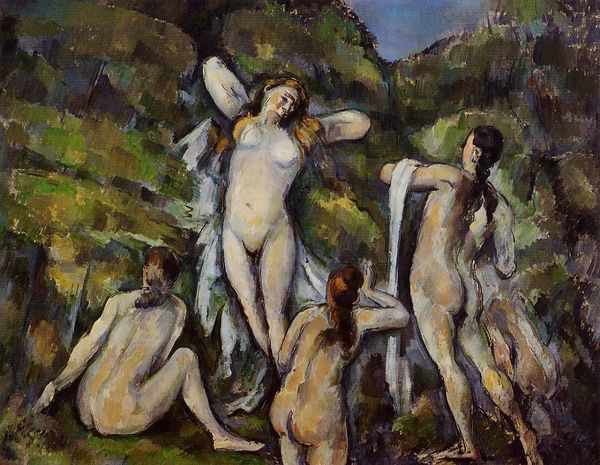
plein-air, oil-paint
#
impressionism
#
plein-air
#
oil-paint
#
landscape
#
impressionist landscape
#
figuration
#
possibly oil pastel
#
oil painting
#
female-nude
#
nude
Dimensions: 38.1 x 46 cm
Copyright: Public domain
Editor: So this is Paul Cézanne's "Bathers," painted around 1875 using oil paint. There's something both classic and strange about the composition. What is your interpretation of this grouping? Curator: It's tempting to see it solely through the lens of Impressionism and Cézanne's developing style, but let's also consider its sociopolitical context. Nude figures in landscape painting often served as allegories of idealized nature or classical myths, yet who had access to that ideal? Editor: You mean, who was represented, and who was left out? Curator: Exactly! Consider the gaze. Who is presumed to be viewing this scene, and whose perspective is prioritized? Are these women active participants in the landscape, or merely objects *within* it? How does the rough, unfinished quality of the brushstrokes influence that? Editor: I guess it makes them less idealized and more real, in a way? It's interesting how the painting almost anticipates later feminist critiques of the male gaze. Curator: Precisely. Cézanne's departure from traditional rendering allows us to question those ingrained power dynamics embedded within art history, pushing us to see beyond just formal beauty. How might the figures' anonymity play into this? Editor: It invites a broader reading. Maybe it's not about specific individuals but about collective experiences, or about the relationship between humanity and nature itself. I see it differently now; it's less about detached observation and more about shared existence. Curator: Precisely. By refusing to simply reproduce tradition, Cézanne inadvertently opens a dialogue, pushing us to critically engage with representation and power, even within seemingly idyllic scenes.
Comments
No comments
Be the first to comment and join the conversation on the ultimate creative platform.
